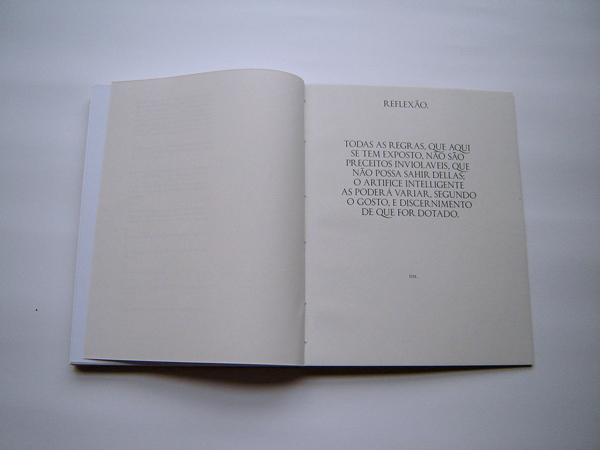The goal for this assigment was to collect texts, from several sources, with a common subject from our choice. Mine was the construction, and the evolution, of the Roman Capitals.

The title of this book was named after the first line from the Trajan Column: "Senatvs Popvlvsqve Romanvs".
In the ancient Roman Empire, they used to draw these letters in the facades of important buildings. They, with the brush, first drew, and then carved in the stone. They only explored the uppercase (or Capitals). Since then, specially in the Renaissance, many authors made several interpetations of those shapes, or did reflect about how to sistematize the letters geometrically. This book tried to discover the historical, and formal, origins of the Roman alphabet.
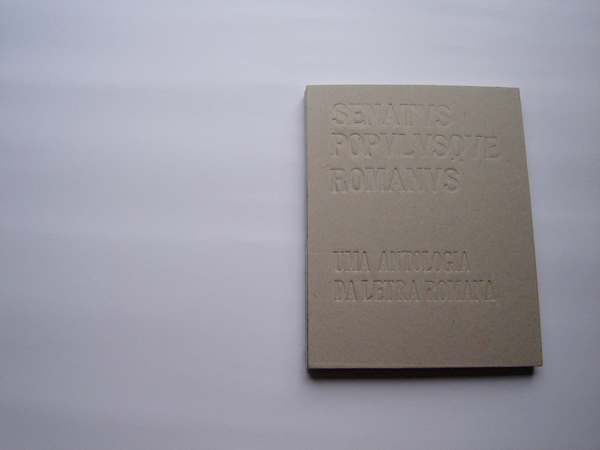
The book is divided in two distinct sections: the first, theoric, talks about the cultural origins of the alphabet; the second, practical, where the reader is challenged to practice the construction, and proportions, of the Roman letters according to some authors.
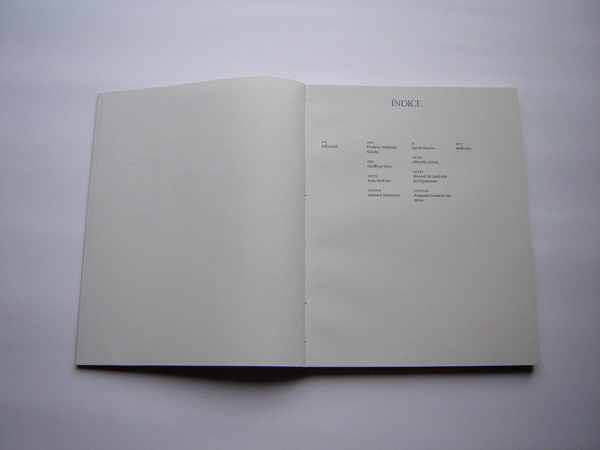
To visually separate them, there are various kinds of paper: for the first section, a champagne colour; for the second, a regular white paper. The exercises, and fine printing, are in a offset paper.


The idea of inscription is present during the book. Mainly to introduce the author, the folios containing the exercises, and the fine prints.

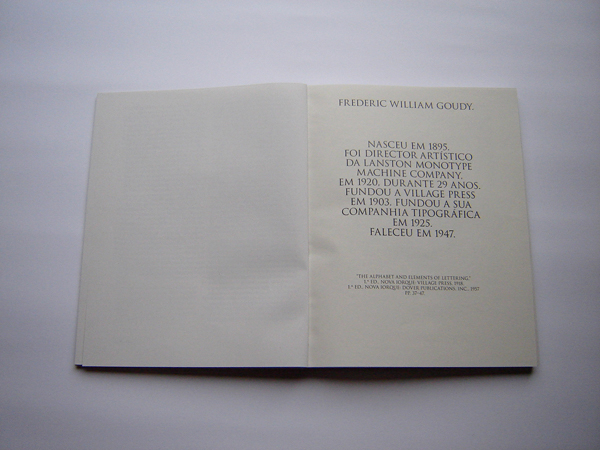
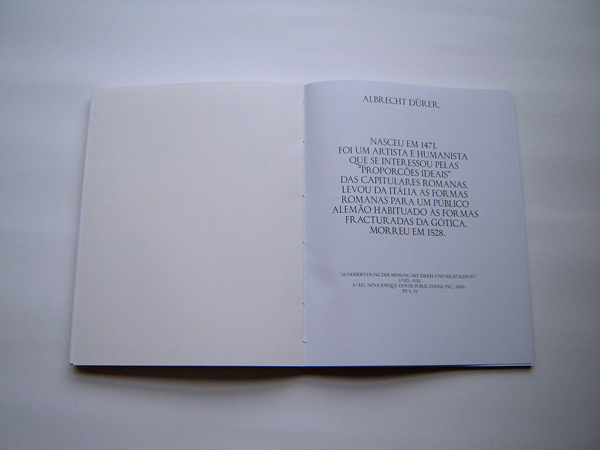
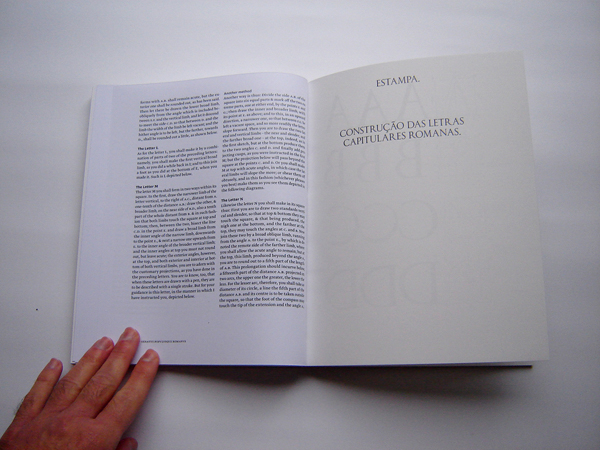
This project haves several challenges. The first one is about the texts. Many authors have different styles of writting. Some prefer to bullet the ideas. Others to run the text. To keep the colour even, and the reading rythm, some strategies are adopted. For example, the page is divided in columns. It gives a sturdy colour to the text. It also makes easier to search for what we are looking for, since the text describes the origins, and construction letter by letter.
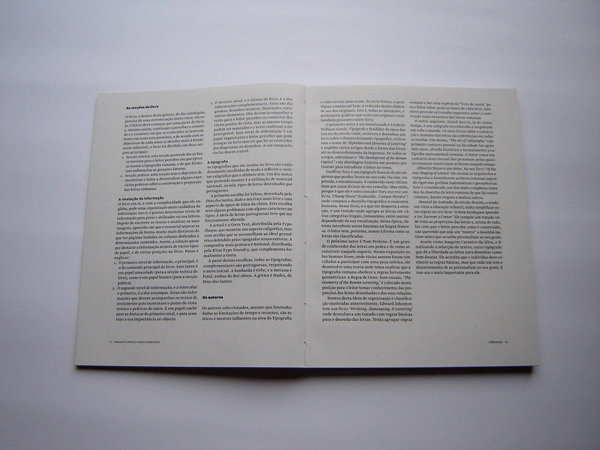
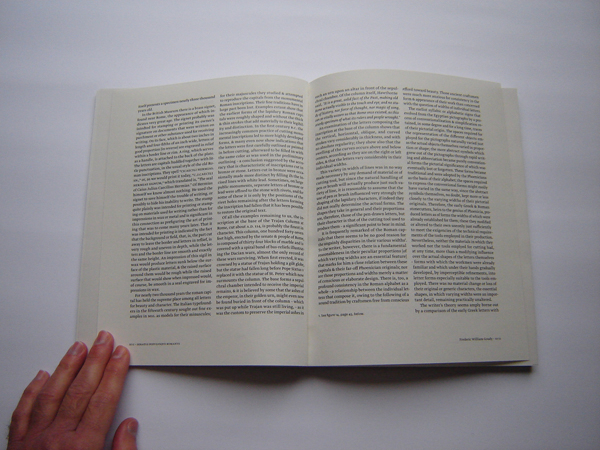
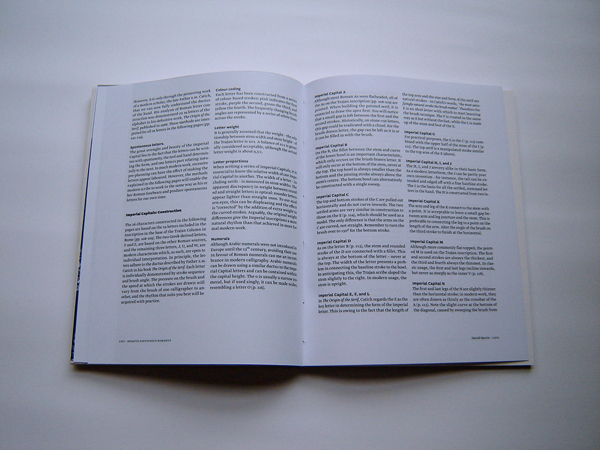

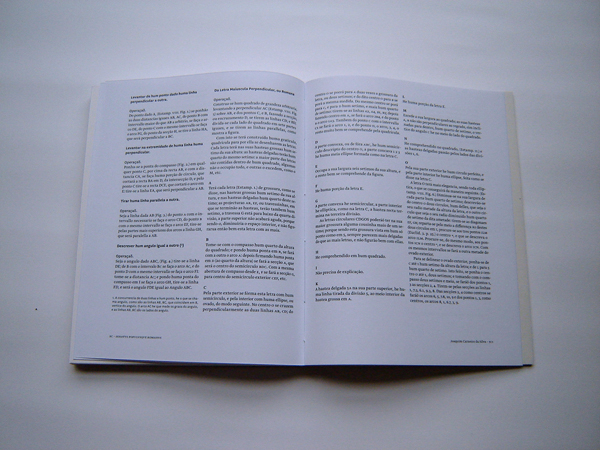
The second challenge is keeping the images alongside the text. Because there is too many images, I decided to create a layer to separate them from the text. This way, the reader can see the images, crossing the references while they are reading.
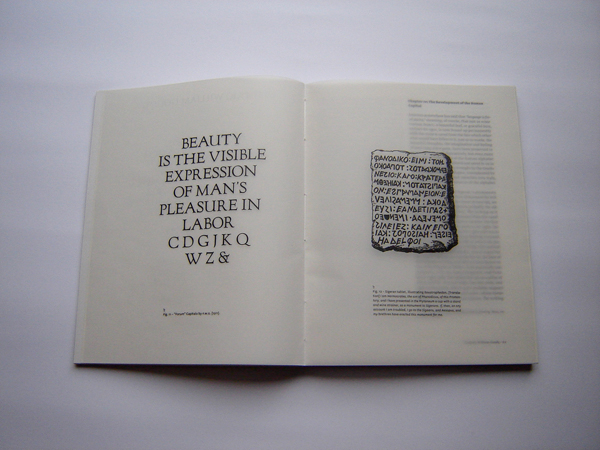
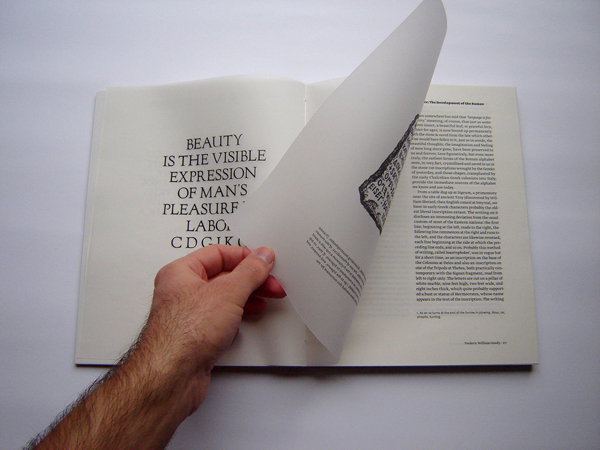
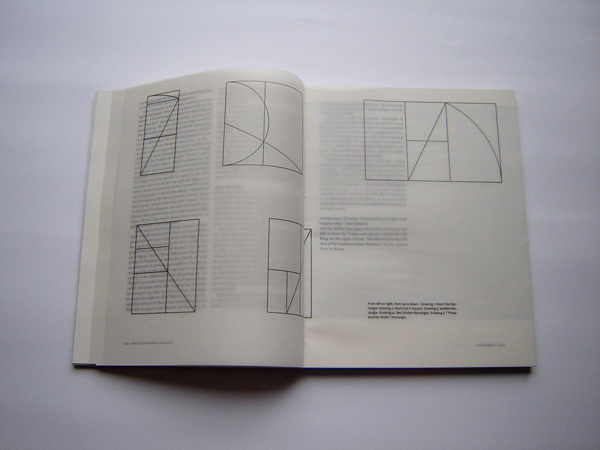
Some authors give some examples, so the reader can try to recreate the letter by their own. These resources are separated at the end of the original text.
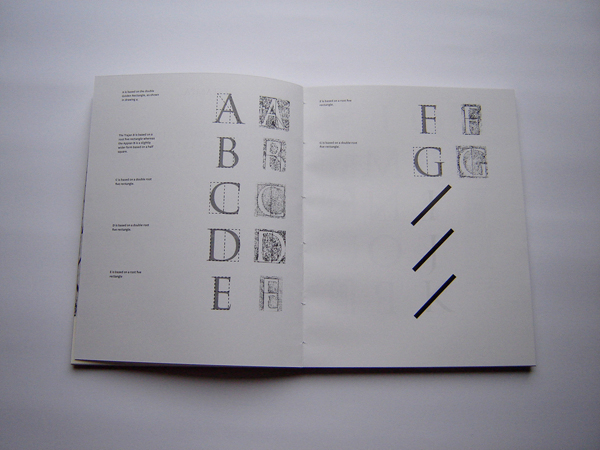
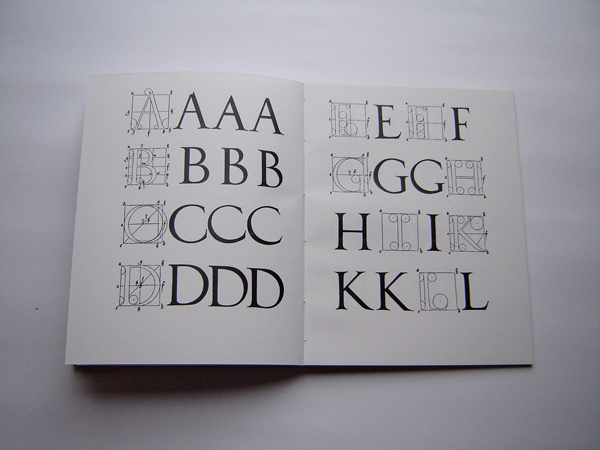
At the end of the book, a quotation from Joaquim Carneiro about customization of the roman alphabet, summarizing the goal of this assignment. "Todas as regras, que aqui se tem exposto, não são preceitos invioláveis, que não possa sahir dellas; O artífice intelligente as poderá variar, segundo o gosto, e discernimento de que for dotado."
It (roughly, and freely) translates as: "All the rules, which have here exposed, are not inviolable precepts, that you can't escape from them; The clever artisan can derivate them, according to his taste, and his gifted discernment."
